Part 1: Ho Chi Minh City – its architectural gems and more

In a city, traces of history inevitably linger in the fabric of its society – some prominently in its architecture, some traceable in its cuisine, some in its language and even in the daily way of life of its society.
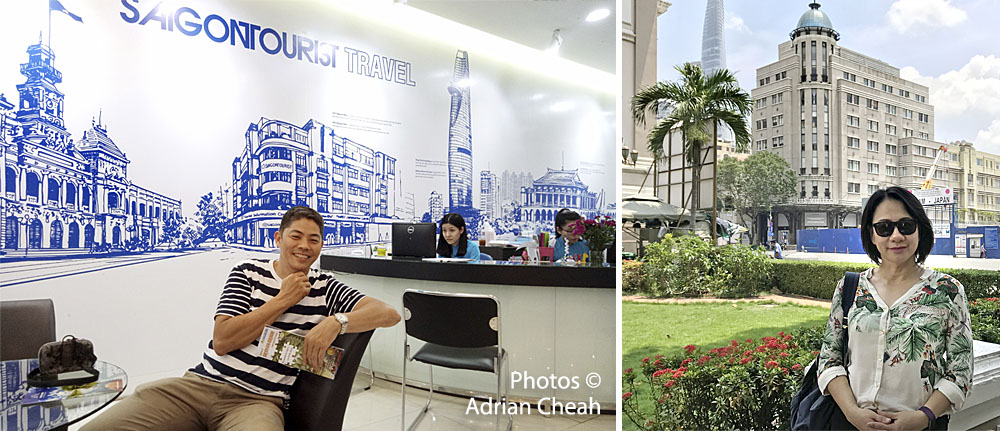
In September 2017, four of my close travelling companions and I explored Ho Chi Minh City. It was an advantage travelling with Jason Goh who knew the city well. He had frequented this bustling metropolitan hub in the past on countless occasions, mostly for business and was familiar with its ins and outs.
Located in southern Vietnam, Ho Chi Minh City, covering an area of 2,095.6 square kilometres, hosts a population of over 8.61 million (statistics by GSO, 2017). It runs along the Saigon river, mostly occupying the western side, with barren swampland facing the downtown riverfront on the eastern side.
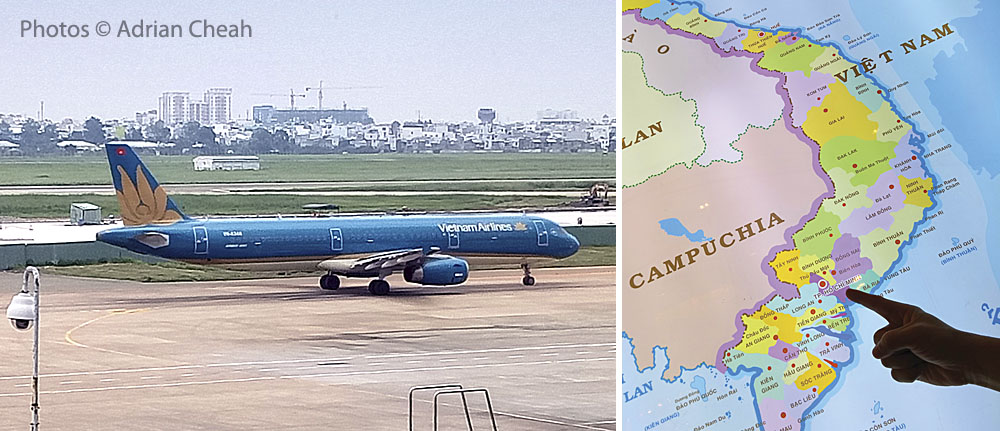
I noticed that the IATA code on my boarding pass for Ho Chi Minh City (formerly known as Saigon) was still listed as SGN. I think once the code is fixed, it will remain even if the name of the city changes. We arrived at the Tan Son Nhat airport within the city limits, making it one of the closest airports to a city in Southeast Asia. A ride downtown to District 1, even with heavy traffic, is within a half hour drive.
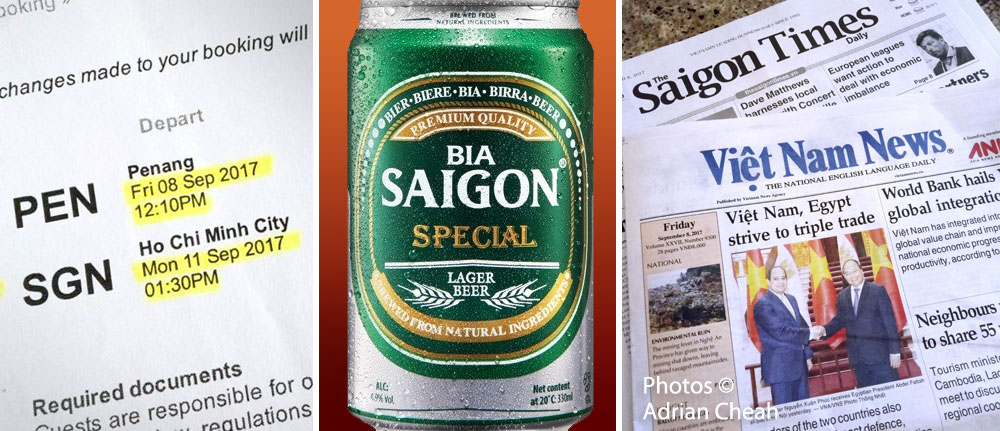
When exploring the city, I noticed that the names, Ho Chi Minh City and Saigon were often used interchangeably. The Vietnam War between the North and South of Vietnam aided by foreign powers on both sides ended in 1975. The North won the war and changed the name of the city from Saigon to Ho Chi Minh City. It was in honour of its prime minister, the nationalist revolutionary leader of the communist party.

Ho Chi Minh (original name Nguyen Sinh Cung) was born in 19 May 1890 at Hoang Tru, Vietnam. He was also called Nguyen Tat Thanh or Nguyen Ai Quoc, however, it was only at the beginning of WWII that he began to use the name Ho Chi Minh. He became the president of the Democratic Republic of Vietnam (North Vietnam) from 1945 to 1969. In North Vietnam, he was widely viewed as the father of the nation and often referred to as Uncle Ho. On 2 September 1969, Uncle Ho died of heart failure at age 79, six years prior to the reunification of Vietnam.
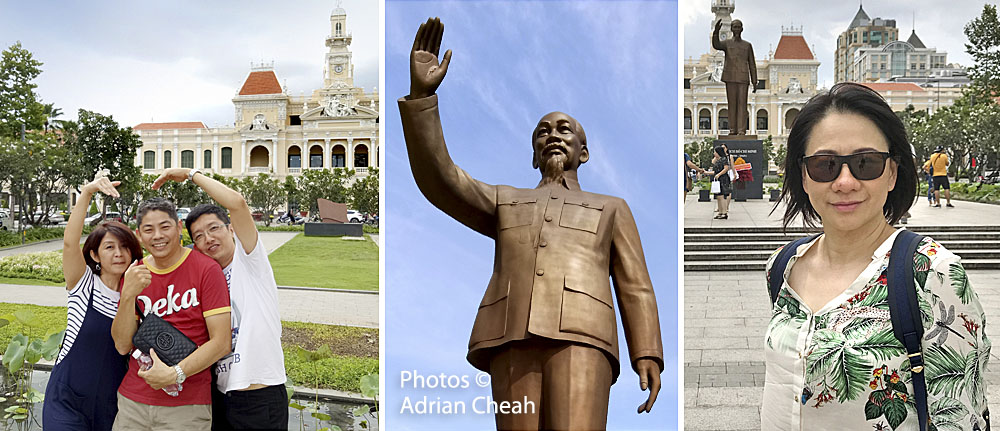
Uncle Ho has become the poster child of the nation. He is the recognisable figurehead that is plastered on memorabilia and souvenir items. His revolutionary zeal made him among the most famous and influential politicians of the 20th century. A 24-foot bronze statue of Uncle Ho (unveiled in 2015), waves to visitors at Nguyen Hue Boulevard in District 1. This statue replaced the former one of Uncle Ho seated, teaching a child.
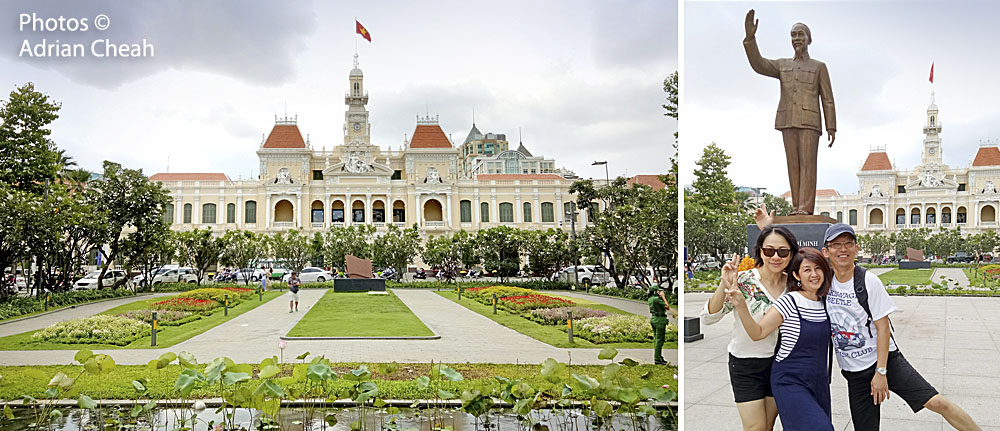
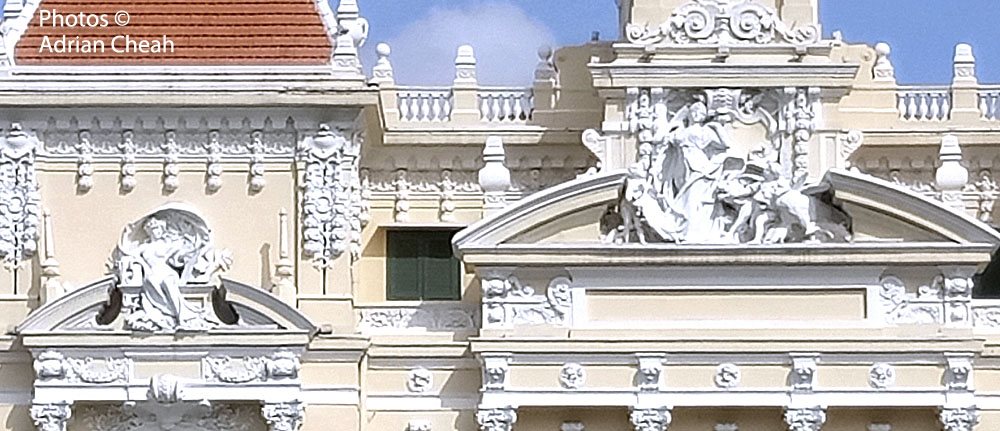
The Ho Chi Minh City People's Committee Head Office building located at the end of the boulevard was the former Hôtel de Ville. Its impressive baroque-style building was designed by French architect Gardès. The architectural gem lavishly outfitted with an ornate facade was crowned with a bell tower that stands on a pyramid-shaped pedestal. Based on its Paris original, the construction of the hotel took almost a decade to complete and was opened in 1908. The hotel continued to serve its elite clientele until 1954.

Today, it serves as the city hall, housing government offices but is not open to visitors. Being one of the city’s most iconic landmarks, the grand cream and white building when lit in the evenings is a spectacular sight to behold.

Within a short distance from city hall, we walked over to the Notre-Dame Cathedral designed by French architect Jules Bourard. He built a smaller version of Notre-Dame de Paris, mirroring the distinctive neo-Romanesque features of the world-renowned cathedral. The first stone was laid in 1877 by Bishop Isidore Colombert and three years later, the Cathedral opened its doors to parishioners. Its interior is illuminated by colourful stained glass panels depicting scenes from the bible. Most of the materials used in its construction were shipped all the way from France including the distinct salmon-shade bricks. Up to this very day, they have successfully retained their vibrant colour. In 1897, two bell towers were added reaching the height of 198 feet.
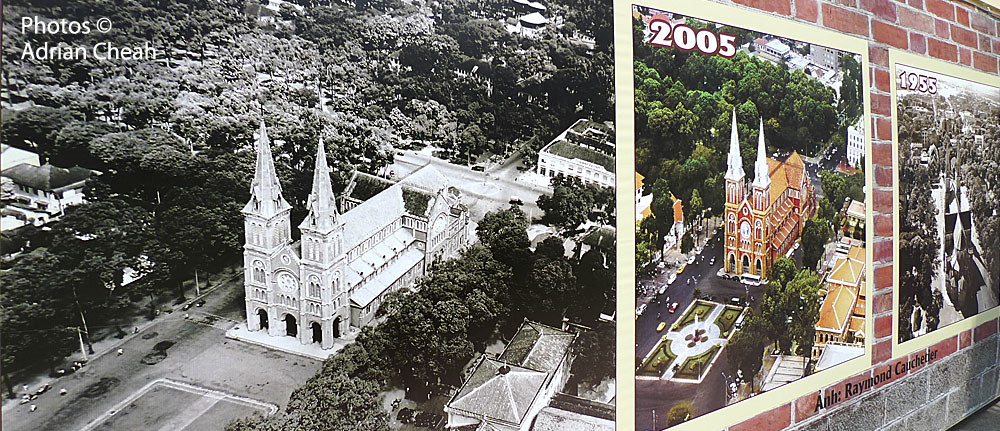
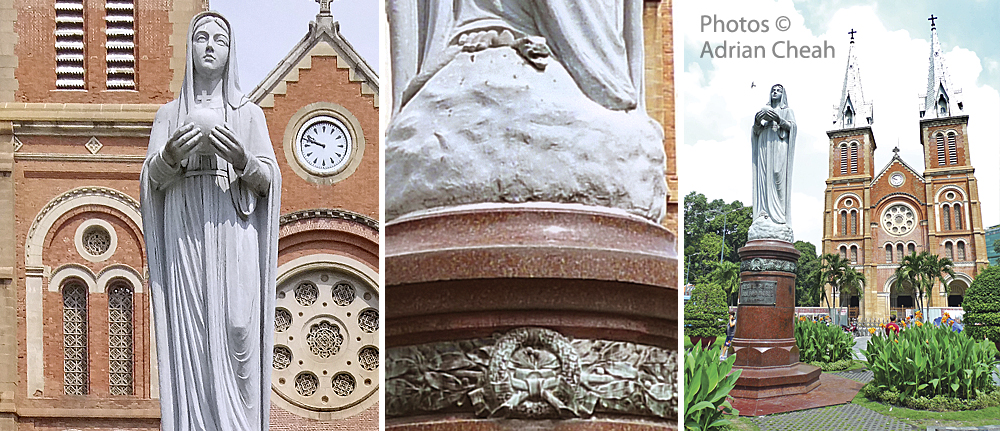
There are photographs of the Cathedral taken from various years posted on the brick fence circling the building. In front of the Cathedral, lies a small garden with a statue of Mother Mary with one foot on a serpent holding a globe affixed with a crucifix. The statue crafted by Italian sculptor Giuseppe Ciocchetti was installed in 1959. It replaced Édouard Lormier’s 1902 bronze statue of Monsignor Pigneau de Béhaine and Crown Prince Cảnh. During the August Revolution of 1945, the statue of Monsignor Pigneau was taken down. Here lies part of Saigon's history that is worth finding out more, especially the legacy of Monsignor Pigneau.
In 1962, the Vatican conferred the Cathedral status as a basilica and gave it the official name of Saigon Notre-Dame Cathedral Basilica. The Cathedral continues to serve as a religious institution for the local population with masses held on Sundays.
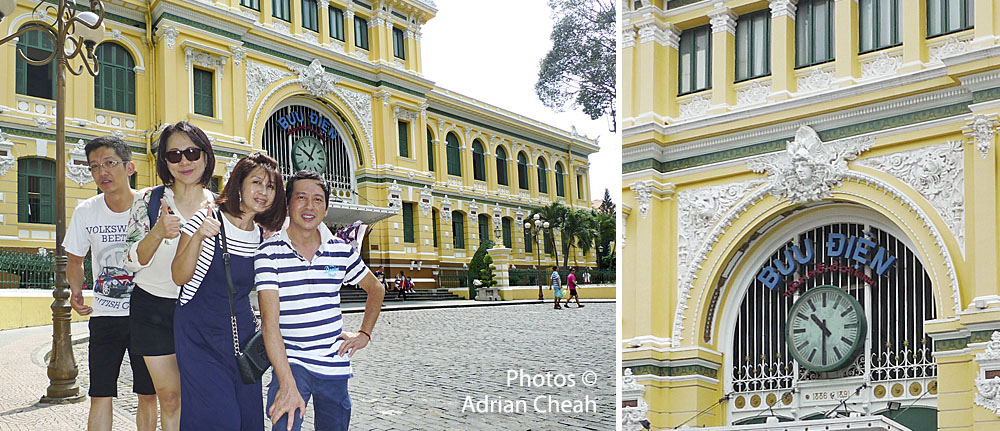
From the Cathedral, we headed over to the well-preserved Central Post Office. The building designed by Marie-Alfred Foulhoux was constructed between 1886 and 1891. It is a beautiful piece of baroque architecture richly embellished with decorative motifs. A large clock is prominently placed at the facade of the main entrance, although a baroque-looking timepiece would have been more harmonious.

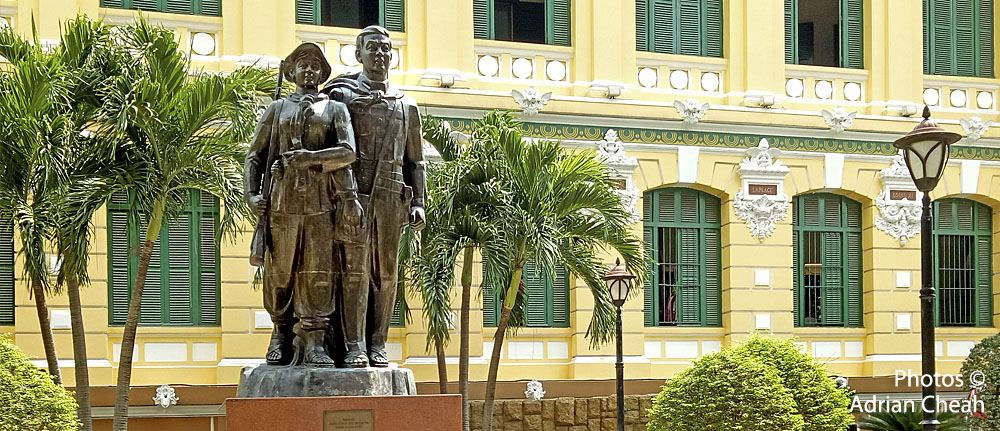
The exterior is coloured bright yellow with white trimmings and dark green being used for the arched wooden-shutter windows. Imbued with colonial history, this building echoes the heyday of its Indochinese era as well as how important the postal service must have been back then. Surprisingly today, this iconic venue still operates as a functioning post office. I could not resist buying some stamps of Uncle Ho for keepsake.
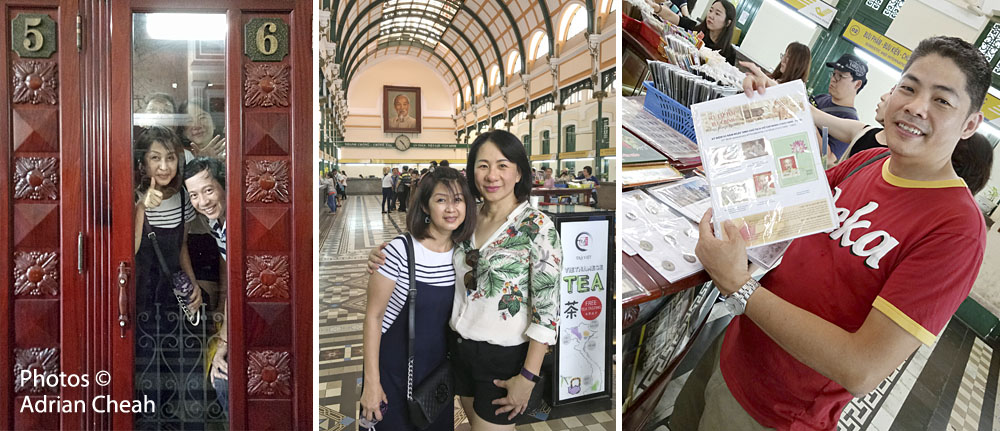
The stunning, spacious interior has high vaulted arched ceilings with decorative metal supports and a gorgeous patterned tiled floor. It is also furnished with antiquated telephone boxes. Two interesting maps have been painted onto the overhead walls – one showing the telegraphic lines of southern Vietnam and Cambodia while the other is of a 1892 map of the Saigon and its surroundings.
Right in the centre of the main lobby once stood a beautiful statue of Iris, the Greek messenger of the gods standing tall on a pedestal. It was removed in the 1950s.

At the end of the hall is a large square portrait of Uncle Ho which would have looked right at home if it had been painted in the style of the Baroque masters (e.g., Rembrandt, Vermeer or Caravaggio). Perhaps someday one of the many brilliant artists of the land would offer a more aesthetically pleasing alternative.
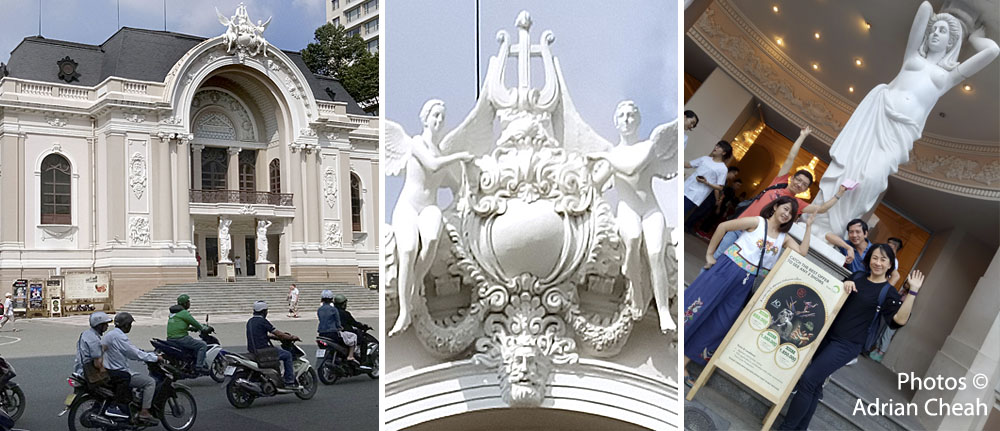
One of my favourite buildings in the city is the Saigon Opera House. It is not only a charming historic theatre but a cultural landmark as well. The spectacular architecture with richly decorated facade was designed by three French architects – Ernest Guichard, Eugène Ferret and Félix Olivier. The two-year construction of this first theatre in Vietnam started in 1897. A pair of beautifully sculptured female statues greeted us at the entrance, while high above, winged angels rested atop its central arch. The well-maintained three-storey building has gone through several major renovations over the century to keep it in pristine condition.
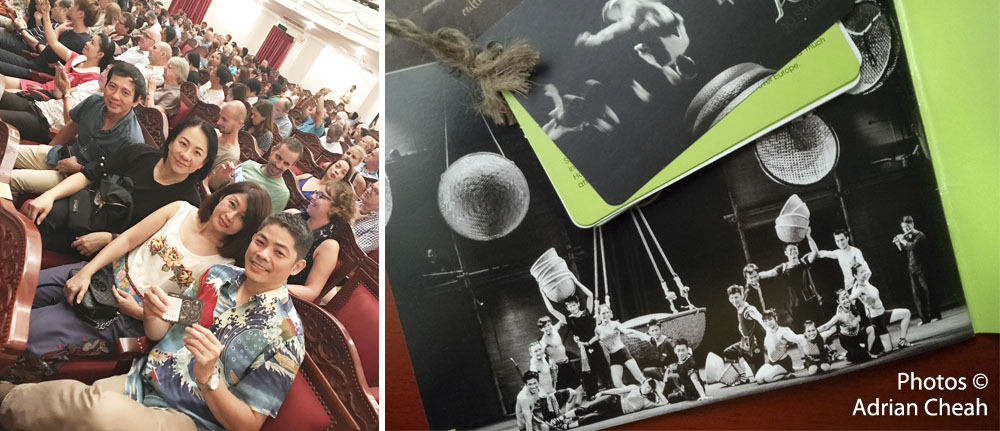
We were at the theatre for a live performance entitled, A O Show that had rave reviews on the internet. As we were ushered to our seats, we were impressed by the beauty of the interior as well as the oval auditorium. The three tiered, 800-seat galleries sit beneath a ceiling awash in Greco-Roman engravings.
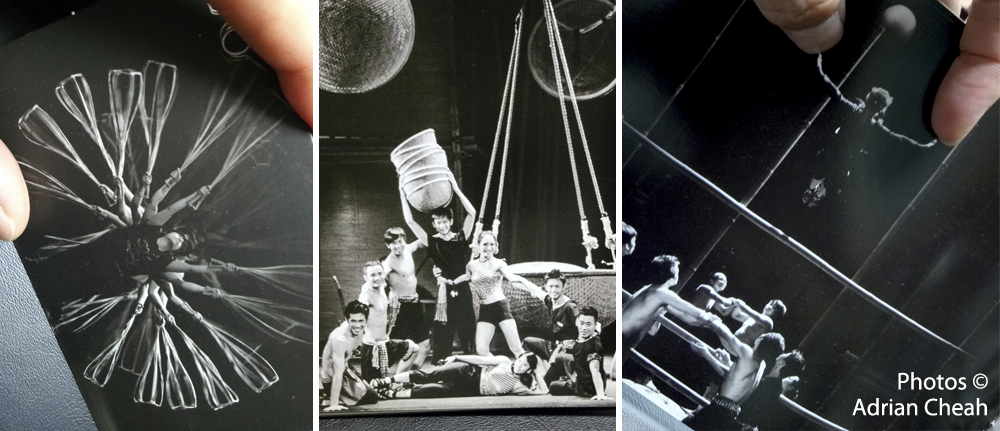
The A O Show was a contemporary production fusing dance, acrobatic stunts and musical forms that paid tribute to the rich Vietnamese culture. It took us on a transitional journey from the rural life of the country to its modern urbanisation. Bamboo, a core feature of Vietnamese rural life, was prominently highlighted in the collection of props around which the A O performance unfolded. The energetic performance was scored by music director, Hguyen Nhat Ly. The Director, Tuan Le had a stint with Cirque du Soleil. He was very proud of the all-Vietnamese team and appreciated the success the show received.
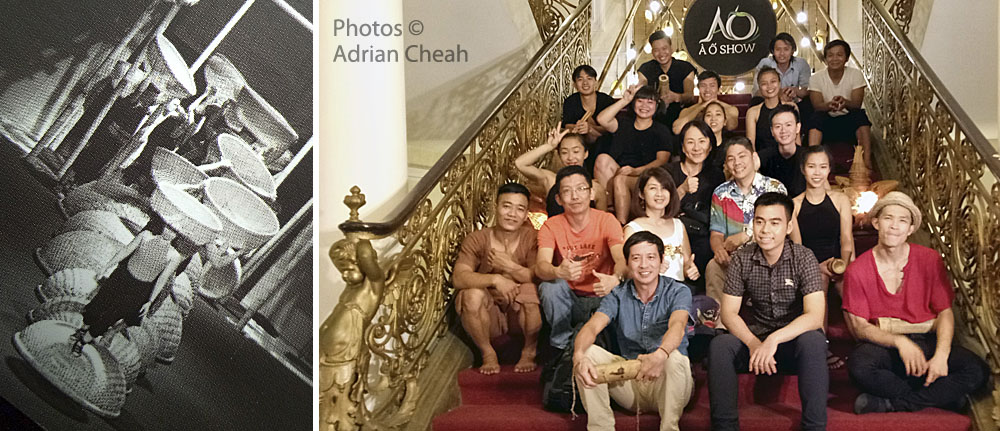
After the show, we managed to capture a group photograph with the exuberant performers, a sweet reminder of the wonderful time we had.
---------------------------------------------------------
Click here for Part 2: Ho Chi Minh City – its glorious food, Vietnamese coffee and more
---------------------------------------------------------
Written and photographed by Adrian Cheah
© All rights reserved
8 September 2017